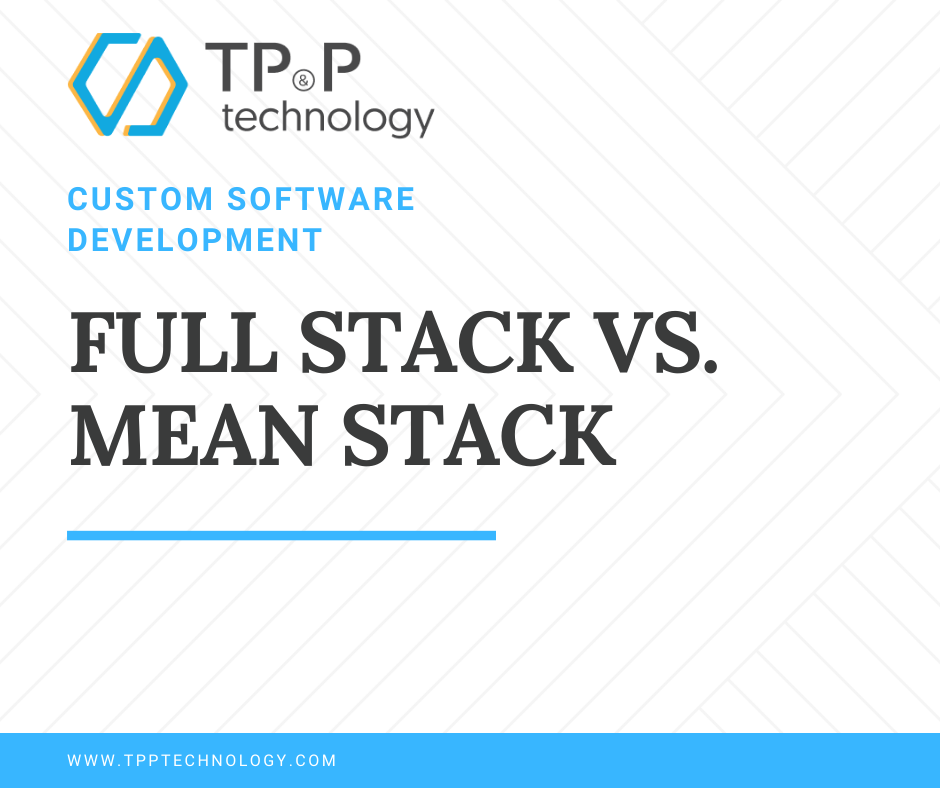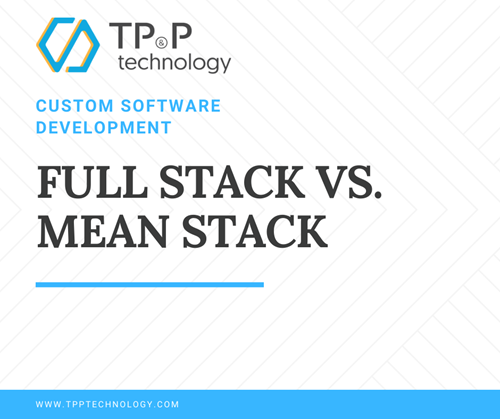
Custom Software Development: Full-stack vs. Mean Stack
With the continuous increase in the mainstream adoption of technology for businesses, custom software development continues to be one of the most in-demand services in the IT industry.
Along with the introduction of advanced technologies for the creation of business application as well as employing qualified developers for digital transformation – there’s also challenges in choosing the right “tech stack” and methodologies in order to efficiently developing high-level performance apps meeting industry standards.
Specifically, among the new software development trends, many companies nowadays employ full-stack developers who are in charge of building the entire application, from front-end to back-end, together with database system management – instead of having separate developers working on different parts of the project development.
This allows companies to reduce the hiring costs, at the same time improve the quality of the product.
In this article, we take a look at details of full-stack development as well as the emerging MEAN stack solutions, to help companies make the right decision in choosing technologies to build robust and scalable business applications.
What is a tech-stack?
In its simplest sense, tech-stack is the combination of using different technologies and tools to build software, removing the potential drawbacks encountered when developers using standalone technologies.
Let’s examine in detail the two most popular stacks, which are: Full-stack and Mean Stack.
Full Stack
Generally speaking, building a custom software application comprises of various components that are inter-connected, ranging from front-end to back-end, and database, together with mobile application as well as others – each component has its peculiar requirements. Not long before, the development approach was to hire individual specialists responsible for creating a separate module.
For example, a back-end developer would only be in charge of the back-end component, while a front-end developer will work on the front-end part, etc.
As mentioned above, in the present-day, many developers opt to employ full-stack developers who will take on the task of building the application in its entirety. This means that a single full-stack developer must be capable of working on many aspects of the application development project, including both front-end, back-end, and database administration.
The particular benefits when employing a full-stack developer to work on a development project are as follow:
- A sole full-stack developer working on a project from start-to-finish allows companies to save on the development costs and hiring resources.
- Highly suitable for SMEs looking to build projects of small to medium size that are budget-friendly.
- With fewer developers, project communication is easier and more effective.
- Full-stack developers can assist in the application design structure and offer input on various levels as need be, including maintenance and upgrading of the whole system which is beyond app development.
- Most of full-stack developers are experienced in web and app development as they have participated in numerous projects from start to finish. Thus, they’ll be well-equipped to deal with any issues that arise during many stages of the project. Moreover, they can help implement long-term solutions for the optimal performance of the application.
- A full-stack developer is more likely to work on multiple projects, switching between from one component to another. As a result, they are more likely to gain flexibility and cross-domain knowledge in working on the app development project.
- And more.
Mean Stack
MEAN is an acronym that stands for MongoDB, Express JS, Angular JS, and NodeJS. As MEAN stack is of Javascript-based technologies, it is open-source and free to use while still offering the best-in-class technologies for custom software development requirements.
MEAN stack covers a wide range of applications development purposes and allows developers to efficiently develop dynamic, complex web applications that are robust, scalable, and perform at a high level.
Currently, MEAN stack is considered as one of the most popular frameworks for open-source web app development. The advantage of creating custom applications using MEAN stack is that web developers only have to use one programming language which is Javascript for both the client and server-side. This makes the development process becomes quick and more efficient.
Let’s explore in details each component of the MEAN stack individually, below:
- MongoDB: is an open-source, NoSQL database system. MongoDB stores the application’s data in JASON (JavaScript Object Notation) format. And since both the application and database use Javascript, the application can perform request between the back-end and database easily, and smoothly (because there’s no need to translate the object traveling back and forth);
- Express.js: is a web application framework for Node.js (which is in Javascript), and this is ensuring the consistent use of Javascript throughout the MEAN stack.
- Angular (Formerly Angular.js, now Angular 2): is an open-source JavaScript framework, allows developers to develop web applications in HTML and JavaScript.
- Node.js: server-side JavaScript execution environment.
Looking to hire MEAN stack developers in Vietnam for your web app development project? Contact us today.
Benefits of using MEAN Stack
One reason that leads many software developers adopting MEAN stack is that it provides many benefits, including:
- Cost-effective: MEAN use only Javascript programming throughout the process – this means companies do not have to hire different IT professionals for each technology. Thus, MEAN STACK allows businesses to streamline their development team, also saving on both time and development costs.
- Flexibility: MEAN STACK enables software developers who are well-versed in Javascript to work on both front-end and back-end development. Moreover, coding solely in one language makes it easier and more efficient to switch between front-end and back-end.
- MEAN stack applications are scalable and extensible which makes them highly suitable for cloud hosting and integration.
- MongoDB is highly embraced due to its scalability in both storage and performance. In particular, developers can easily expand the resources required for the database with just a few clicks. This makes MEAN stack perfect for application with an in-frequent spike in activities.
Conclusion
The decision to choose between MEAN stack and other tech stacks should be made to meet your particular application development purpose.
Both have their own advantages and may suit different development purposes – with MEAN stack is well-known for its flexibility and scalability, as well as the consistent use of Javascript technology throughout the stack, making it perfect technology for developing cloud-hosting web application.
MEAN Stack Development Company in Vietnam
TP&P Technology is a leading software company in Vietnam providing a wide range of IT outsourcing for businesses, including MEAN Stack development services. Choose from our flexible engagement models that are best suitable for your particular business needs.
Our MEAN Stack developers can help your businesses build robust, scalable, and high-level performance web applications, delivering extraordinary business growth.



